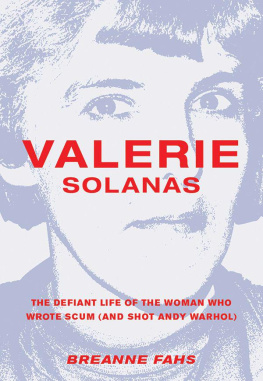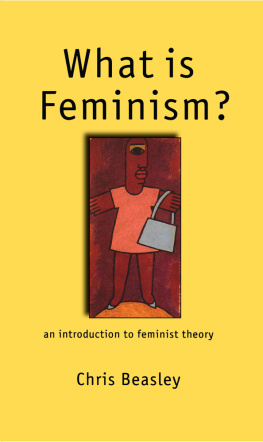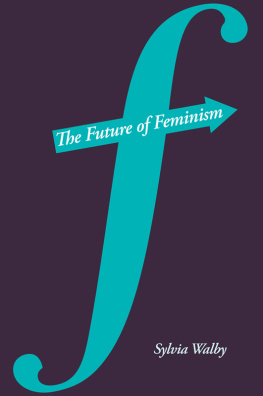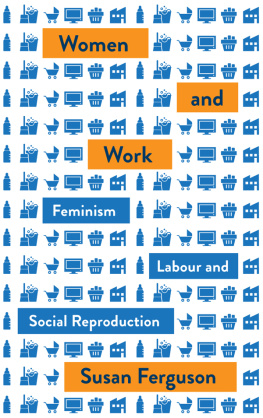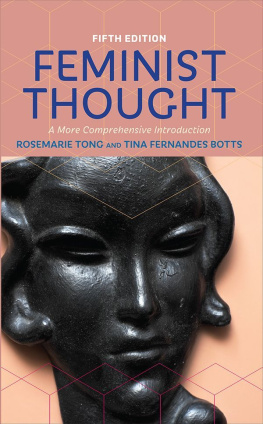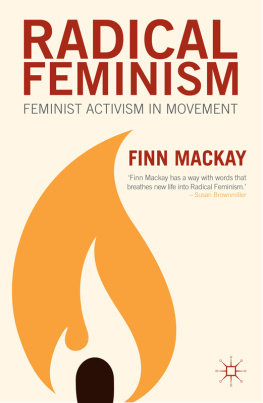
FIREBRAND FEMINISM
FIREBRAND FEMINISM

THE RADICAL LIVES OF
TI-GRACE ATKINSON KATHIE SARACHILD ROXANNE DUNBAR-ORTIZ AND DANA DENSMORE
BREANNE FAHS
UNIVERSITY OF WASHINGTON | Seattle
Copyright 2018 by the University of Washington Press
Printed and bound in the United States of America
Design by Katrina Noble
Composed in Iowan Old Style, typeface designed by John Downer
22 21 20 19 185 4 3 2 1
All rights reserved. No part of this publication may be reproduced or transmitted in any form or by any means, electronic or mechanical, including photocopy, recording, or any information storage or retrieval system, without permission in writing from the publisher.
UNIVERSITY OF WASHINGTON PRESS
www.washington.edu/uwpress
LIBRARY OF CONGRESS CATALOGING-IN-PUBLICATION DATA
Names: Fahs, Breanne, author.
Title: Firebrand feminism : the radical lives of Ti-Grace Atkinson, Kathie Sarachild, Roxanne Dunbar-Ortiz, and Dana Densmore / Breanne Fahs.
Description: Seattle : University of Washington, [2018] | Includes bibliographical references and index. |
Identifiers: LCCN 2017048934 (print) | LCCN 2017053559 (ebook) | ISBN 9780295743172 (ebook) | ISBN 9780295743158 (hardcover : alk. paper) | ISBN 9780295743165 (pbk. : alk. paper)
Subjects: LCSH: Feminism. | Radicalism.
Classification: LCC HQ1155 (ebook) | LCC HQ1155 .F34 2018 (print) | DDC 305.42dc23
LC record available at https://lccn.loc.gov/2017048934
For my mother, for wanting willful daughters
May all mothers be so brave and generous.
It is well to note that from radicalism has flowed all that makes life better today than yesterday. It is now, as in the past, the only force capable of leading the world out of its night of hunger, hatred and fear. Humanity advances over a path blazed by radicals and stained with their blood. So long as there is injustice there will be radicals. The name itself is the proudest title of free men and women.
INDUSTRIAL WORKERS OF THE WORLD
CONTENTS
PREFACE
I first met each of these womenTi-Grace, Kathie, Roxanne, and Danawhen I contacted them in 2008 for an interview for my biography of SCUM Manifesto author and would-be assassin Valerie Solanas. As radical feminists, they had a certain fondness for Valeries writings, particularly her anger toward men and Daddys girls and her ongoing insistence on the twin impulses of destruction and revolution. We began our intergenerational conversations with a shared vision for a feminism full of fire, one defined not by careful institutional progress but by hot-temperedness, impatience, outrage, and willfulness.
During our many conversations, I realized fairly quickly that each of these women was a force of nature in her own right, defining and shaping decades worth of thinking and theorizing about radical feminism from its inception in the late 1960s through today. Their astonishing bravery, hilariously dry humor, unabashed intensities, curious overlaps and disagreements with each other, and fresh insights about feminism, politics, and sexuality ignited an urgent feeling in me that more readers needed to experience their worldthe world as it could be, as it might be, with full-frontal firebrand feminism at the helm. And so, this book is an extension of, and reflection on, parts of their lives and works. It is a testament to the collective energies of second-wave radical feminist organizing and to these womens unique roles in shaping what would become a powerhouse social movement with deep implications for todays feminist politics.
The five of us have become, perhaps unwittingly, fellow travelers over these past decades, as their friendships span fifty years, while my friendship with them spans a mere three presidencies (and many hours of emails, phone calls, and conversations). That they have given far more to me than I have given to them is evident in every page of this book; I am the younger radical, trying to absorb their lessons, at times foolish or hasty or full of blind spots, seeing their words and works through my own privileged lens of a womens studies undergraduate and graduate education and a long-term tenured womens studies professorship. I have spent years sitting and listening, writing down, recording, transcribing, wondering about, laughing with, studying, and thinking about these women. Their uncommon generosity of time and spirit, of humor and energy, of goodwill and insight, permeates the stories they tell here. They remind us that academic feminist work must ground itself in the lived realities of womens lives (and can never refuse self-criticism and the push to listen more to activists), that marching on the streets and barricading doorways matters as much asif not more thanspeech and text, that womens studies began as the scholarly wing of an activist movement and thus cannot constantly seek institutional approval and stories of respectability.
Directly or indirectly, they have taught me many lessons: Cowardice is one of the most dangerous forces in the world (and cowardly liberals should always be treated with suspicion). One must always write with blood or else not write at all. Sisterhood is far more than a pithy term for female bondingit can, and has, changed the world. All revolutions require fun and laughter. Learning across generations not only sustains us but ensures that we dont have to reinvent the wheel every time. Radical change requires risk, loss, defiance, sacrifice, and setbacks, and is rarely recorded by historians in any depth or nuance (especially for the tales of radical women). And the stories we already know about feminismand radical feminism in particularare wholly, permanently incomplete.
To tell the stories in this volume, I have chosen to foreground their first-person accounts in the form of oral history. Because oral history seeks to both record and preserve oral testimony of historical events experienced firsthand, and because oral histories rely upon peoples accounts of the past as connected to the present, this book relies heavily on the These methods provide a unique framework for viewing the stories and testimonies of radical feminists active during the second wave (late 1960s and early 1970s).
Nevertheless, the relationship between their stories and my framing of their stories remains fraught with possibilities for misunderstandings and misinterpretations, though I have worked to minimize these whenever possible. Oral histories ask that we become listeners, letting people tell their stories. I embrace here the notion that these following chapters reflect the way that people select, recall, and reframe their experiences in light of current sociopolitical and biographical contexts; they speak here to us forty to fifty years after the second wave. As Susan Geiger wrote, There is an interesting parallel, I think, between Jacqueline Halls call for a historical practice that turns on partiality, that is self-conscious about perspective and the stories and life stories oral historians relate, which are themselves partial, perspectival, and self-conscious. Feminist oral history methodology reflects and values these parallel activitiesthe practice of the researcher, the practice of the oral historian. Neither practice stands for the other, but if she is careful, the feminist historians own interpretive product will encompass radical, respectful, newly accessible truths, and realities about womens lives. These accounts are always partial, always shifting, always subject to revision and reframing, but they are still stories worth telling, arguably more necessary now than ever before.
Next page

